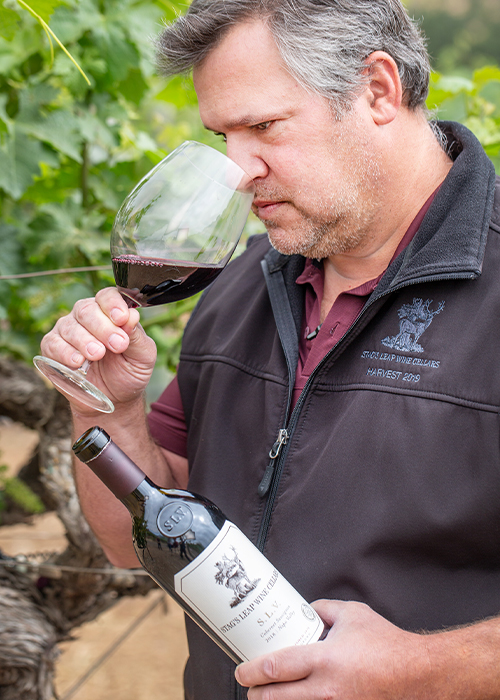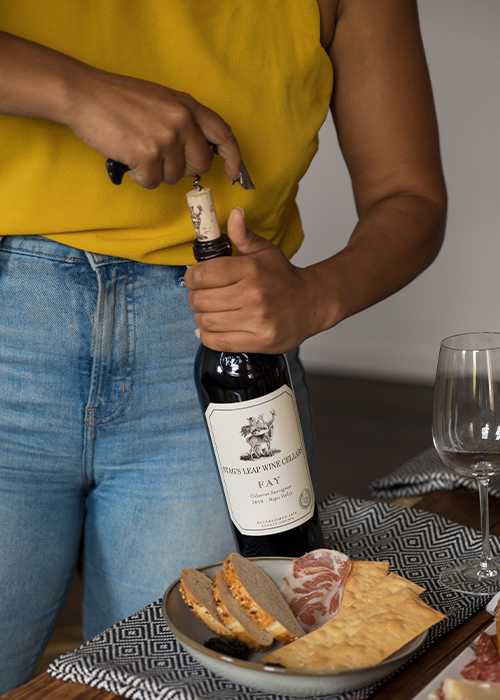
On May 24, 1976 at 3 p.m., nine of the most respected names in French gastronomy sat down at a long table at the Intercontinental Hotel in Paris for a blind wine tasting. The contenders were France’s top estates from Bordeaux and Burgundy versus wine from an unknown region of Northern California. The tasting was the idea of a British wine merchant who owned a wine store in Paris as a way to drum up publicity for his shop by hosting a tasting of California wines to mark America’s bicentennial anniversary. At the time, the thought of American wine conjured up images of cheap jug wines. No one took the wine tasting seriously. Assuming the French would sweep the competition, only one journalist even bothered to show up to cover it. The nine judges confidently scribbled down notes while periodically saying things like, “Ah, back to France” or “This is definitely California. It has no nose.”
And then the unthinkable happened. Once the scores were tallied, French judges rated two Californian wines — the Stag’s Leap Wine Cellars 1973 S.L.V. Cabernet Sauvignon and the Chateau Montelena 1973 Chardonnay — above France’s best wines.
In a David-versus-Goliath feat, a new winery from an upstart area of California called Napa Valley rated higher than a bottle from what was then considered the world’s best wine region. Stag’s Leap Wine Cellars had been founded just six years earlier, in 1970, whereas Château Mouton-Rothschild had been making wine for three centuries.
The Judgment of Paris, as the legendary tasting would later be called, broke the myth that only the French made top- quality wine. It ushered in a globalization of wine. It also put California on the map as the up-and-coming star of the wine world. It is said that the entire history of American wine can be defined before the tasting in Paris and after the tasting in Paris.

The Stag’s Leap Wine Cellars’ journey started in the 1960s when a fresh wave of pioneers came to the valley to realize their dream of making world-class wines, and the winery’s founding family was among them. The estate was founded in 1970 with the purchase of Stag’s Leap Vineyard (S.L.V.). The Stag’s Leap Wine Cellars winery was built in 1972, the same year the winery released its first vintage of S.L.V. Cabernet Sauvignon. The very next vintage of this wine, crafted from three-year-old vines, made history with resonating effects.
Today Napa Valley is known for its world-class Cabernet Sauvignons. In the mid-1900s, it was not. In fact, it was Nathan Fay who planted the first Cabernet grapes in 1961 in what is now the Stags Leap District AVA. At the time, conventional wisdom maintained that the area was too cool for the grape variety. In 1970, the founder of Stag’s Leap Wine Cellars purchased a 44-acre prune orchard next door to Fay’s vineyard. Surrounded by the Stags Leap Palisades to the east and rolling hills to the west, the Stags Leap District is described as a valley within a valley.
Stag’s Leap Wine Cellars set out to create a wine with the classical structure and elegance of great Bordeaux, while exhibiting the regional character of California. The phrase “an iron fist in a velvet glove” is often used to describe the supple yet structured quality of the winery’s Cabernet. Stag’s Leap Wine Cellars shied away from crafting overly tannic, bold wines in search of elegance. The winemaking style from the early days has been one of balance, depth, and subtle endurance.
Winning the Judgment of Paris was the confidence boost the winery needed to continue making this style of Napa Valley Cabernet. The volcanic soil of the vineyard contributes to the multi-layered structure, concentration, and spicy intensity of the wine. In 1986, the winery purchased Nathan Fay’s adjoining 66-acre vineyard and named it FAY in his honor. The vineyard still remains one of the most famous vineyards in Napa Valley, producing grapes with supple red and blueberry character, voluptuous perfume, and a luscious texture.
Grapes from the original S.L.V. vineyard produce Cabernet Sauvignon that has an intense concentration of dark fruit while the grapes from the FAY vineyard produce a wine with a rounder, softer, richer berry expression. Grapes from both vineyards are used to produce bottles of CASK 23, the flagship of the estate. Its aim is to bring out the finest characteristics of both estate vineyards and produce a wine that shows the darker fruit of S.L.V. and the red fruit of FAY, with a greater intensity and length on the finish.

In 2013, Marcus Notaro was named winemaker for Stag’s Leap Wine Cellars, bringing with him two decades of expertise for producing exceptional Cabernet Sauvignon-based wines.
Today Stag’s Leap Wine Cellars is considered a Napa Valley first-growth estate. The winery’s three estate-grown Cabernet Sauvignons — CASK 23, S.L.V., and FAY along with ARTEMIS Napa Valley Cabernet — are among the most highly regarded and collected Cabernet Sauvignons in the world. The winery continues to garner the respect and acclaim of the most fierce wine critics, proving that the Judgment of Paris was no flash in the pan.
In 2020, Stag’s Leap Wine Cellars celebrated its 50th anniversary with no intention of slowing down.
It’s been said that wine brands that stick around stay true to themselves and continually push the envelope. It’s clear that Stag’s Leap Wine Cellars is driving to ensure the next 50 years are even more glorious than the first 50.
By the way, that bottle of 1973 S.L.V. Cabernet Sauvignon sits alongside Meriwether Lewis’s compass and Alexander Graham Bell’s telephone in the Smithsonian as one of the 101 “Objects that made America.”
This article is sponsored by Stag’s Leap Wine Cellars.